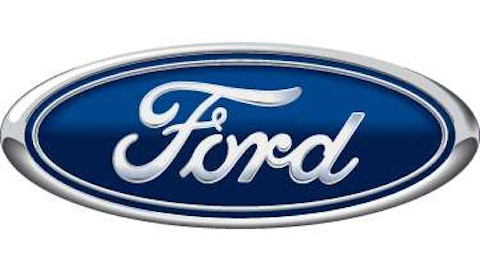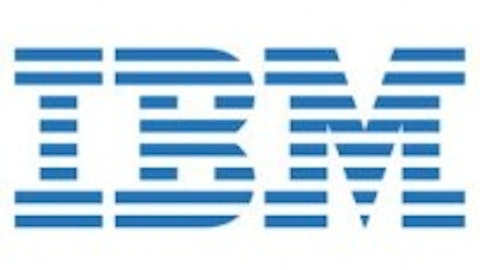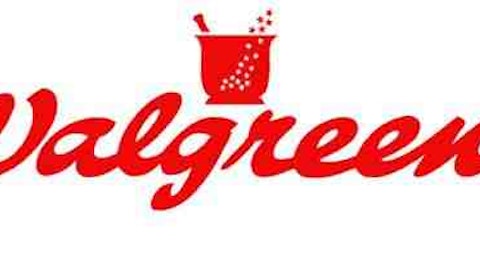On this day in economic and business history …
The Interstate Highway System was created on June 29, 1956, when President Dwight Eisenhower signed the Federal Aid Highway Act into law. Few laws on the books in the United States have the same profound day-to-day impact on the lives of everyone in the country. To understand why, let’s take a look at what U.S. was like before the Interstate Highway System, and what it became later as highways connected the nation.
Eisenhower’s long-standing interest in an efficient road network had early roots. As a young lieutenant colonel, Ike took part in a transcontinental military convoy from Washington, D.C., to San Francisco. It took the convoy two months to cross the country, averaging less than 60 miles per day. Nine of the convoy’s trucks were destroyed by poor road conditions. America’s first major road-building project, the Federal-Aid Road Highway Act — the Interstate Highway’s immediate predecessor — had just been completed, but its $500,000 expenditure (equal to less than $7 million today) had only paved another 13 miles of the nation’s roadways. Not much of a project, really.

Source: Blanche Espy Chenoweth Papers via University of Houston, taken 1915.
During the Roaring ’20s, the automobile caught on in a big way, but even at the end of this period of great prosperity there were fewer than 400,000 miles of paved road, and it still took two weeks to drive across the country going all out. Only half of America’s roads were paved after the close of World War II, and shortly before Eisenhower took office the nation had 1.7 million miles of surfaced roads. That isn’t the same thing as a paved road — putting gravel on top of dirt would qualify as “surfacing” it. However, the nation was making progress. President Harry Truman had enacted a $25 million interstate highway funding project in 1952, which made some improvements to (or built anew) about 6,400 miles of existing roadway by the time Eisenhower’s term began. At this point, only a quarter of American roadways were thought capable of handling the growth of traffic that might occur by the 1970s.
Eisenhower resumed his push for a highway megaproject after handling the drawdown of the Korean War and pushed his goal through by pledging that federal funds would account for 90% of the costs — to be paid with bond issues and recouped from gas taxes. The act’s $33.5 billion outlay, equal to about $290 billion today, would be put toward building 41,000 miles of roads to link nearly every city in the country with a population of more than 50,000 people. As Secretary of Commerce Sinclair Weeks allocated the first $1.1 billion in funds to the states, he called it “the greatest public-works program in the history of the world.” The results of that program (and its ultimate cost) make it difficult to argue with Weeks’ claim.

Source: Ed Schipul via Flickr.
By 1960, more than 10,000 miles of the interstate highway system had been completed. That year, there were 2.3 million miles of unpaved roads across the United States, but only 1.2 million miles of paved roads. By then, America’s suburban sprawl had already begun — from 1950 to 1960, the U.S. saw the first decline in the percentage of people living in city centers (from 32.8% to 32.3%), but its percentage of suburban dwellers grew from 23.3% to 30.9% of the population. The United States had 74 million registered vehicles on the roads in 1960, an increase of 20 million over the previous decade.
The original program was completed in 35 years, but it was extended in later years to cover more than 47,000 miles. At the 50th anniversary of its creation, the interstate highway system’s total cost was estimated at $425 billion (nearly $500 billion today), but the American Highway Users Alliance estimates that this project has produced more than $6 in economic benefit for every $1 of construction expense. By that point, the ratio of paved and unpaved roads had flipped, and the United States had 2.7 million miles of paved road, compared with 1.32 million miles of unpaved roads. The growth of the interstate highway system thus resulted in the addition of approximately 1.5 million miles of other paved roads to the national infrastructure. Driving across all of these new paved roads would be equal to more than three round trips to the moon and back.
There were 240 million registered vehicles in the U.S. after five decades of interstate highway construction. Suburban populations, which now make up more than half of the entire national population, have grown by more than 100 million people since the interstate highway system began. This national suburbanization has had enormous effects on the American economy.

Source: User Minesweeper on Wikipedia Commons.
In 1960, seven of the 10 largest American companies (by revenue) were either automakers or oil producers. The largest pure consumer-goods company, Kraft Foods Group Inc (NASDAQ:KRFT), made only 15% as much revenue as the largest company, General Motors Company (NYSE:GM). The list of leading companies reads like a web of automotive interconnections: automakers, parts suppliers, steelmakers, tire manufacturers, oil refiners, and paint and plastics makers. Not one of the 100 largest companies in America was a retailer.
Five decades later, things were a bit different. Three oil producers and one automaker still placed among the top 10 American companies. Now, however, General Motors Company (NYSE:GM) doesn’t lead the pack: Wal-Mart Stores, Inc. (NYSE:WMT) sits at the top, earning more than $100 billion more in annual revenue than the largest oil company. Insurers and financial companies had come into their own to finance and protect America’s widely dispersed consumer culture — five of the top 25 American companies are part of the finance industry. Wal-Mart Stores, Inc. (NYSE:WMT) also had plenty of company, as 14 of America’s 100 largest companies were retailers — including one online-only retailer, a concept that would be impossible without a vast network of paved roads for delivery services.
Real (adjusted for inflation) GDP per capita more than doubled in the U.S. from 1960 to 2010. The country also enjoyed a period of strong stock market growth to go with its economic boom. Despite enduring a couple of rather terrible recessions, the Dow Jones Industrial Average (Dow Jones Indices:.DJI) gained 5.7% a year from 1960 to 2010. The Dow Jones Industrial Average (Dow Jones Indices:.DJI), like the national economy, also underwent some rather notable changes to reflect America’s changing balance of corporate power. Wal-Mart Stores, Inc. (NYSE:WMT) is, of course, part of the index now, along with The Home Depot, Inc. (NYSE:HD), which has become the bellwether of America’s suburban housing health. Two insurers and three financial companies have also earned a place on the Dow Jones Industrial Average (Dow Jones Indices:.DJI), replacing the three automakers and two steelmakers that were once among the index’s most closely watched components in 1960.
You might very well be reading this article at a suburban home, office, or shopping center somewhere in America. If so, Dwight Eisenhower’s foresight deserves some credit for the infrastructure that made it possible.
The article The Best $500 Billion the United States Has Ever Spent originally appeared on Fool.com and is written by Alex Planes.
Fool contributor Alex Planes has no position in any stocks mentioned. The Motley Fool recommends General Motors and Home Depot.
Copyright © 1995 – 2013 The Motley Fool, LLC. All rights reserved. The Motley Fool has a disclosure policy.






